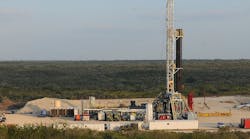US Rep. Martin T. Heinrich (D-NM) tried to cool things off when he was finally recognized at the House Natural Resources Committee’s Energy and Mineral Resources subcommittee hearing on June 4.
The discussion of unconventional natural gas production had turned into a battle over hydraulic fracturing. Proponents for bringing the technology’s regulation back under the federal Safe Drinking Water Act said it poses a risk to drinking water supplies otherwise. Opponents argued that this would add a layer of redundant regulation as producers were beginning to tap an abundant new domestic gas resource.
Heinrich essentially suggested that it was time for people to step back and take a deep breath. “We should get at this less from politics and more from science and technology. My concern is how these fluids are handled once they reach the surface and how we’re safely disposing of them,” he said.
“Most state water directors would recognize two critical elements: construction of the well and handling of fluids on the surface,” said Scott Kell, one of the witnesses and president of the Ground Water Protection Council. This has led to requiring storage of drilling and other production fluids in lead-lined storage tanks and the fluids’ reinjection deep underground, he said.
Best practices
The council’s recommendations include studying the most effective hydraulic fracturing procedures to develop best management practices for each state.
“A one-size-fits-all federal program is not the most effective way to regulate in this area,” said Kell, who also is deputy minerals resource management division chief in Ohio’s Department of Natural Resources. Zones close to underground drinking water sources, as determined by a state’s regulating agency, would be of special concern, Kell said.
The subcommittee’s chairman, US Rep. Jim Costa (D-Calif.), asked Kell and the four other witnesses if they knew of any best management practices which might be applicable. None of them did. So I put Costa’s question to the American Petroleum Institute, which has an active standards and practices program, on June 8.
Several approaches
“We don’t have a practice specifically targeted at hydraulic fracturing,” said Richard L. Ranger, an API senior policy advisor, adding, “Ours deal with drilling, and we’re reviewing practice documents we have including well construction and site stewardship and management.”
Ranger said GWPC’s recent study, which did not link contamination with hydraulic fracturing, was only the latest of several to reach that conclusion. “Contamination incidents are associated with the surface, and not what goes on below,” he said.
Ranger said he suspects that some assertions simply roll up spill reports and other incidents and blame them on hydraulic fracturing. API, meanwhile, continues its recommended standards and practices on well construction and environmental operations, and is looking at its site maintenance standard, he said.

